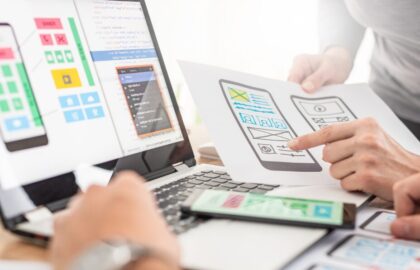UX / UI Product Design

Career Advice
Design for Good: Exploring Social Impact Design
Social impact design isn't just about aesthetics; it's about using design thinking to tackle complex social issues and improve lives. Dive deeper and see how design can become a powerful tool for positive change.

How To
Design for Good: Exploring (and Avoiding) Bias in Design
Explore “the dark side” of design, where biased design decisions can have highly detrimental effects on product users.

Tech Trends
The Case for Accessible Design
Accessible design, defined as design that specifically considers the needs of users with disabilities, seems like an obvious win for designers. Yet many organizations are reluctant to invest in the process of planning, designing, and testing with accessibility in mind. What arguments can designers use to convince companies to prioritize accessibility?

Tech Trends
Storytelling in Design Presentations
Learn why storytelling is so critically important for designers when they are crafting design presentations, and find six storytelling techniques you can apply when crafting your own presentation.

Career Advice
Wireframing and Prototyping: Bringing Your Ideas to Life
Most great products start as simple ideas. But how those simple ideas become great products is a not so straightforward journey. It is a process highlighted by generating and refining many ideas and putting them to the test over and over again. Here are some tips on the process of turning your ideas into a usable product that people love.

Tech Trends
Solving Common Design Problems With UI Design Patterns
When designers discover a usability problem within a product’s interface, they’ll rarely spend time inventing a brand new solution. Most usability issues can be solved by implementing UI design patterns, which are familiar and tested solutions to common usability problems in user interfaces.

Tech Trends
User Personas in UX Design: When Are They Useful?
Some designers view personas as a key tool for inspiring empathy for your users, while others argue that they’re overrated and unnecessary. What are some common problems with user personas, and how can designers ensure they’ve created one that’s useful?
Browse by Category
- All Categories
- Admissions
- Alumni Stories
- Announcements
- Artificial Intelligence
- Career Advice
- Cybersecurity Engineering
- Data Science
- Denver Campus
- Diversity In Tech
- Enterprise
- Flatiron School
- How To
- NYC Campus
- Online Campus
- Partnerships
- Software Engineering
- Staff / Coach Features
- Tech Trends
- UX / UI Product Design
- Women In Tech
